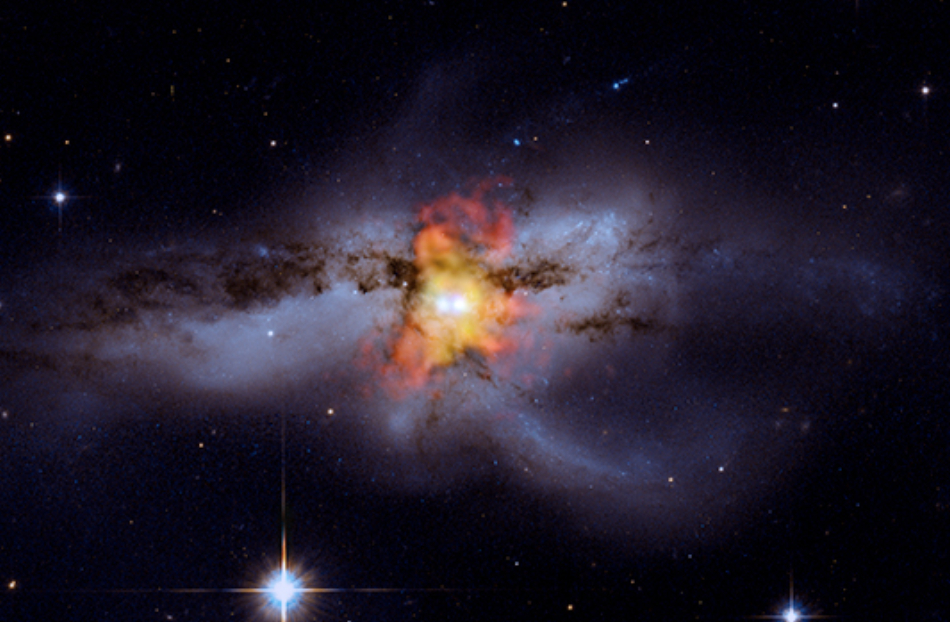
 Credit: X-ray (NASA/CXC/MIT/C.Canizares, M.Nowak); Optical (NASA/STScI)
Credit: X-ray (NASA/CXC/MIT/C.Canizares, M.Nowak); Optical (NASA/STScI)
Darkness Dancing
Supermassive black holes lie at the heart of most (if not all) galaxies. Sometimes these black holes are voracious, swallowing everything in their neighborhood, generating enormous beams of radiation. In other cases (like the central black hole in our own Milky Way) they lie quietly, waiting for an unsuspecting piece of matter (an interstellar cloud, a star, or planetary system) to fall into its clutches. Imagine what might happen if one supermassive black hole met another somewhere in one of the Universe's dark alleys. It would look somewhat like the image above, a composite X-ray image (from the Chandra Observatory) plus a high-resolution optical image from the Hubble Space Telescope. NGC 6240 is a disturbed galaxy produced by the merger of two galaxies which fell into each other. The Chandra X-ray image (in blue-white and orange) shows two point sources of X-ray emission. These sources pinpoint two supermassive black holes. As the galaxies which form the components of NGC 6240 merge, their central black holes merge too, eventually spiraling together and finally forming a single black hole. When this happens, this merger will produce enormous ripples in the fabric of spacetime, the "gravitational radiation" predicted by Einstein. How often do such black mergers occur? Maybe we can ask LISA.
Published: October 12, 2009
<
HEA Dictionary ● Archive
● Search HEAPOW
● Other Languages
● HEAPOW on Facebook
● Download all Images
● Education ● HEAD
>
Each week the HEASARC
brings you new, exciting and beautiful images from X-ray and Gamma ray
astronomy. Check back each week and be sure to check out the HEAPOW archive!
Page Author: Dr. Michael F. Corcoran
Last modified Monday, 26-Feb-2024 17:22:53 EST


